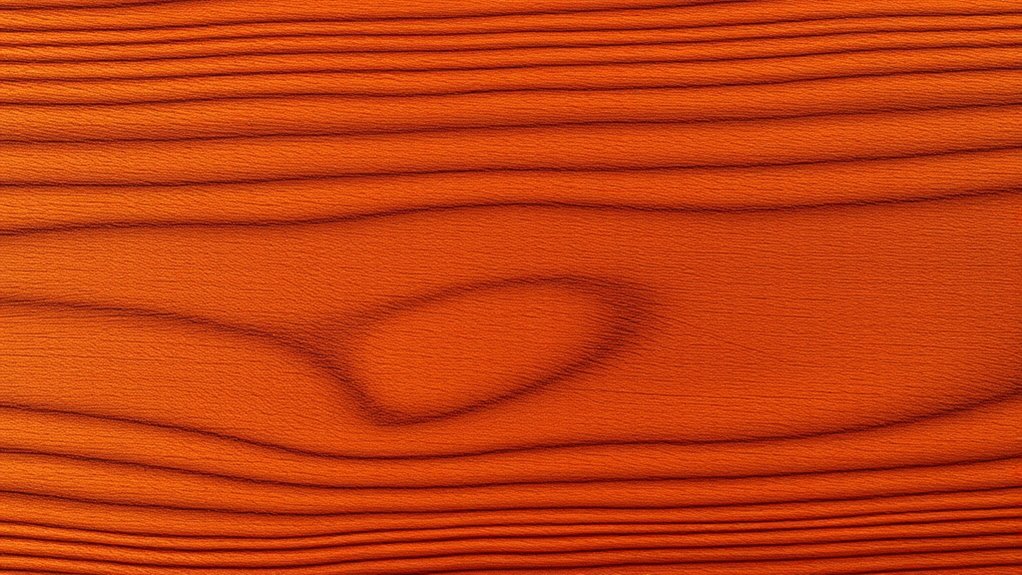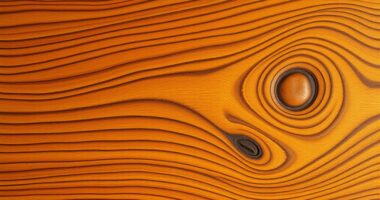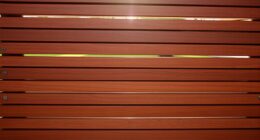Understanding wood grain helps you choose the right material for your design. Different grains, like straight, spiral, or wavy, impact the look, strength, and how easy it is to finish your project. Open grains add rustic charm, while closed grains give a smooth, refined surface. Decorative patterns create visual interest, and selecting the appropriate grain type guarantees durability and aesthetics. Keep exploring to discover how to maximize your wood choices for stunning results.
Key Takeaways
- Different grain types—straight, spiral, wavy, curly—affect wood’s appearance, workability, and how it interacts with finishes.
- Open-grain woods have larger pores and a rustic look, while closed-grain woods are smoother and more refined.
- Grain texture influences surface finish, with rougher textures absorbing more stain and smoother grains providing a sleek look.
- Decorative grain patterns like birdseye or curly grain create visual interest and can serve as focal points in design.
- Choosing the right grain type enhances durability, aesthetic appeal, and suitability for specific projects or styles.
Types of Wood Grain and Their Characteristics
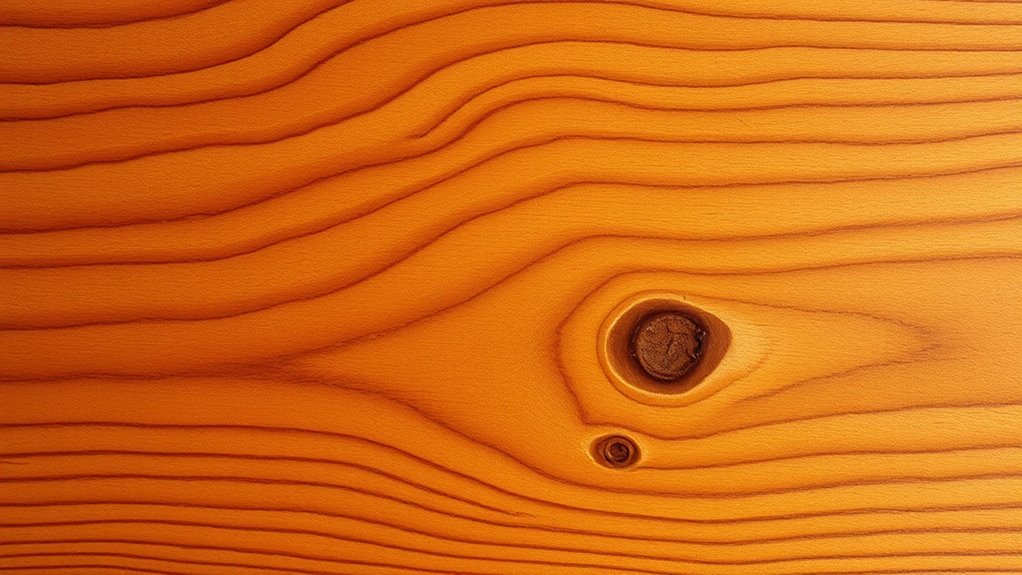
Wood grain types vary considerably and directly influence the appearance and workability of your projects. If you choose straight grain, you’ll notice fibers run parallel to the wood’s length, creating a uniform look that’s easier to cut and machine. Species like oak and maple often feature this grain, making them popular for furniture and cabinetry.
In contrast, spiral and interlocked grains grow at angles or switch directions, which can cause tearout or rough finishes during machining. Wavy and irregular grains have flowing, unpredictable patterns, adding character but making work more challenging.
Curly and figured grains create rippled, shimmering effects, prized for their beauty but difficult to machine cleanly. Finally, coarse grains have larger pores and bold patterns, while fine grains are smooth and subtle, influencing both aesthetics and handling.
Differences Between Open and Closed Grain Woods
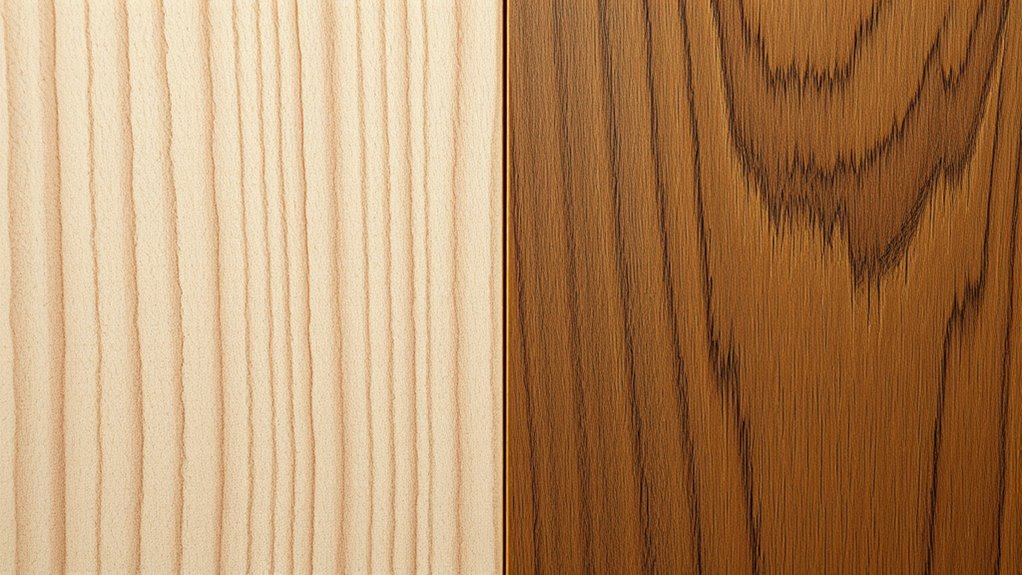
Understanding the differences between open and closed grain woods is essential for achieving your desired final look and feel.
Open-grain woods have larger pores, giving them a coarser texture and more prominent grain patterns. This creates a rustic, characterful appearance, often suited for traditional or bold designs. Open grain woods tend to absorb more finish and may require filler, while closed-grain woods need less preparation for finishing. Knowing the wood grain can help you select the right finish and application method for your project.
In contrast, closed-grain woods have small pores, resulting in a smooth surface with minimal visible pores. This makes them ideal for sleek, modern styles. Additionally, understanding the grain pattern can influence the overall ambiance of a farmhouse bedroom, whether you aim for a cozy, rustic charm or a streamlined modern look.
Knowledge of these differences helps you select the right wood for your project, whether you prefer the textured warmth of open grain or the refined smoothness of closed grain.
How Grain Texture Affects Surface Finish and Strength

Grain texture plays a crucial role in determining how a surface finish interacts with the wood, influencing both appearance and durability. Rough-textured wood absorbs more finish due to exposed fibers, allowing deeper penetration, but may require pore fillers for smooth, glossy results in woods like Red Oak or Wenge. Additionally, the filtration technology used in finishing processes can affect how well the finish adheres and lasts on different textures. The surface finish can also enhance or diminish the natural grain pattern, affecting visual appeal. Smooth surfaces absorb less finish, resulting in thinner coatings that emphasize surface detail. Fine-textured woods like Hard Maple take on a smoother, glassy feel after sanding, while coarser woods scatter light and reduce gloss. Grain texture also indicates strength; finer textures often mean tighter grain and higher durability, whereas rougher textures with large pores may be less strong and more prone to moisture or wear. Interestingly, attention to grain details during finishing can significantly impact the final aesthetic and performance of the wood surface, especially when considering the impact of grain on durability.
Recognizing and Using Decorative Grain Patterns
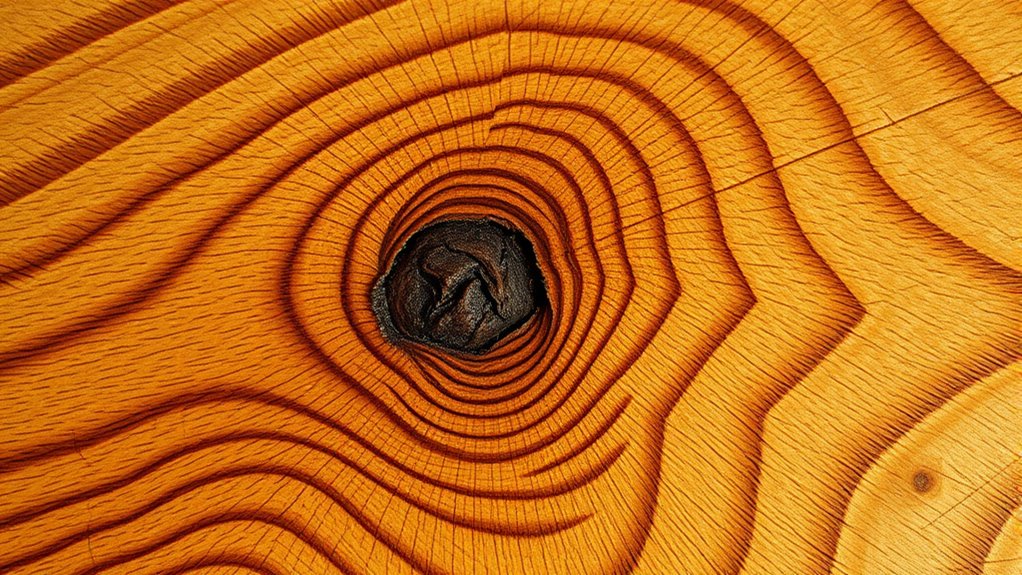
Decorative grain patterns add visual interest and character to woodworking projects, transforming simple surfaces into striking designs. To recognize these patterns, look for distinctive features like the small swirling eyes of birdseye maple or the rippled waves of curly grain. Understanding wood grain can help you identify the different types of patterns and their effects on the overall aesthetic. The different grain patterns can influence how light interacts with the surface, creating unique visual effects. Quilt patterns create a three-dimensional illusion with undulating textures, while ribbon or interlocked grains twist fibers into striped effects. Wavy grains add a sense of movement, and burl or fiddleback grains serve as focal points, highlighting craftsmanship. Recognizing visual cues helps you select the right decorative grains, making your work stand out with natural beauty and unique character. Additionally, being aware of grain direction can enhance how you cut and assemble pieces for optimal visual impact. Paying attention to biodiversity in your woodworking environment can also promote healthier ecosystems, even in small workshop spaces. Use these patterns intentionally to enhance your project’s appeal—aligning grain direction for depth, or matching patterns for symmetry.
Selecting the Right Grain Type for Your Project
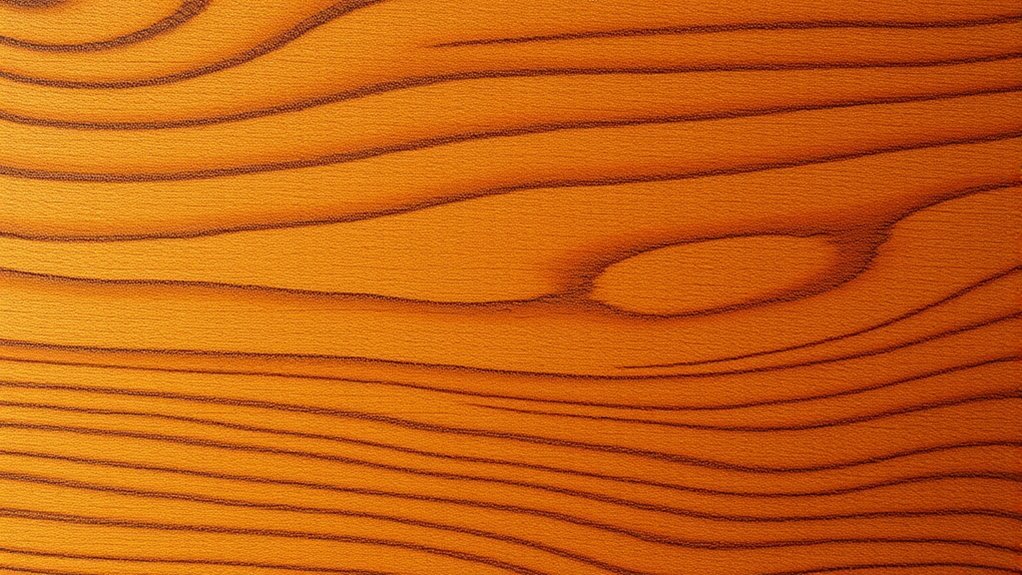
Choosing the right wood grain type for your project is essential to achieving the desired look and performance. If you want durability and stability, opt for straight grain woods like maple or cedar—they’re easier to work with and less prone to warping.
For a rustic or natural aesthetic, open-grain woods such as oak or ash offer a coarse, textured appearance that ages well.
If you’re aiming for a smooth, refined finish, closed grains like cherry or cedar provide a sleek surface.
Irregular or spiral grains add visual interest and unique patterns, perfect for decorative pieces or carvings.
Consider your project’s environment, function, and style when selecting grain types. Balancing aesthetics with technical demands ensures your finished piece looks great and lasts.
Frequently Asked Questions
How Does Climate Influence Wood Grain Development Over a Tree’S Lifespan?
Climate greatly influences your wood’s grain over its lifespan. Warmer periods cause denser, darker summerwood, while cooler times produce lighter, less dense springwood.
Drought slows growth, creating narrower rings with tighter grains.
Long-term climate shifts alter the overall grain pattern, leading to irregularities or defects.
Seasonal changes and climate stressors shape your wood’s texture, density, and appearance, making each piece uniquely adapted to its environmental history.
Can Grain Patterns Be Altered or Enhanced During Woodworking Processes?
You can definitely alter or enhance grain patterns during woodworking. Techniques like applying layered glazes and wiping with fabrics create depth and contrast, highlighting natural grain features.
Using tools such as fine metal combs emphasizes textures, while surface treatments like dry brushing soften and unify the appearance. By splitting, shaving, or routing along revealed grain lines, you improve the natural look.
These methods let you customize and showcase your wood’s unique grain in your finished piece.
What Are Common Challenges When Working With Interlocking Grain Woods?
When working with interlocked grain woods, you face challenges like tearout during machining and unpredictable splitting, especially during drying.
You may struggle to achieve a smooth, uniform finish because the grain pattern is irregular.
Using the wrong tools or techniques can lead to warping or cracking.
Careful planning, choosing appropriate tools, and adjusting your methods can help you manage these issues and produce quality results.
How Does Grain Orientation Affect the Durability of Finished Furniture?
You should know that grain orientation directly impacts your furniture’s durability. When the grain runs parallel to the stress, your piece becomes stronger and resistant to splitting and warping.
Using straight or continuous grain guarantees better load distribution and longevity. Avoid irregular grains or knots in critical areas, as they can weaken the structure.
Properly aligning the grain with the piece’s longest dimension helps your furniture withstand daily use and environmental changes.
Are There Sustainable Sources That Favor Specific Grain Types for Eco-Friendly Projects?
You’ll find that sustainable sources often favor specific grain types for eco-friendly projects. For example, species like Teak, with FSC certification, come from responsibly managed forests, ensuring eco-conscious harvesting.
Woods like Maple and Okoume are fast-growing, making them renewable choices. By choosing these sustainably sourced grains, you support environmental health and create eco-friendly designs that blend beauty, durability, and responsible forestry practices.
Conclusion
Understanding wood grain isn’t just about aesthetics—it’s about harnessing nature’s design for durability and beauty. Many believe that selecting the right grain type can predict a piece’s strength and lifespan, but studies show that proper finishing and craftsmanship matter even more. So, trust your eye, consider the grain’s characteristics, and don’t be afraid to experiment. When you choose wisely, your project will not only look stunning but stand the test of time.
